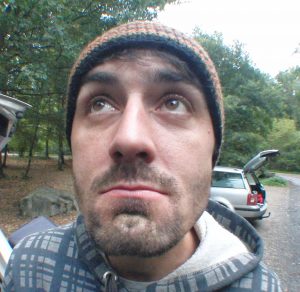prof. UAM dr hab. Mikołaj Pochylski

Zainteresowania naukowe
- Dynamika i struktura materii miękkiej (ciecze przechłodzone i szkliwa, układy samo-organizujące)
- Płyny w zewnętrznych polach fizycznych (magnetycznie i elektrycznie indukowana orientacja, elektro-reologia)
- Optyczne metody eksperymentalne (rozpraszanie światła, polarymetria, mikroskopia)
Współpraca z zagranicznymi ośrodkami naukowymi
- Institute for Physico-Chemical Processes, National Council of Science (CNR), Messina, Italy
- Institute for Nanostuctured Materials, National Council of Science (CNR), Rome, Italy
Wykształcenie
- 1996: Zespół Szkół Elektrycznych nr2, ul. Świt 25 (Elektromechanik urządzeń przemysłowych)
- 2001: Magister Fizyki, Wydział Fizyki UAM
- 2006: Doktor Fizyki, Wydział Fizyki UAM
- 2017: Doktor habilitowany, Wydział Fizyki UAM
Inne informacje
- Skarbnik Oddziału poznańskiego Polskiego Towarzystwa Fizycznego
- Certyfikowany programista LabVIEW, Certified LabVIEW Associate Developer (CLAD), 2010
2008
Kaczmarek, Michał S; Ładziński, Piotr; Woźniak, Zenon; Błaszczak, Zdzisław; Surma, Marian; Pochylski, Mikołaj
In: Journal of Molecular Liquids, vol. 138, no. 1, pp. 168 - 172, 2008, ISSN: 0167-7322.
Abstract | Links | BibTeX | Tagi: Biological membranes, Dialysis therapy, Optical interference
@article{Kaczmarek2008b,
title = {Dynamics of transportation of glucose and urea water solutions through a porous polyethyleneterephthalate membrane studied by optical interference},
author = {Michał S Kaczmarek and Piotr Ładziński and Zenon Woźniak and Zdzisław Błaszczak and Marian Surma and Mikołaj Pochylski},
url = {http://www.sciencedirect.com/science/article/pii/S0167732207001948},
doi = {10.1016/j.molliq.2007.10.002},
issn = {0167-7322},
year = {2008},
date = {2008-01-01},
journal = {Journal of Molecular Liquids},
volume = {138},
number = {1},
pages = {168 - 172},
abstract = {The paper reports an interferometric method for characterisation of the dynamics of transportation of glucose and urea water solutions through a porous polyethyleneterephthalate membrane. The method is based on measurements of the changes in the light refraction indices of solutions partitioned by the membrane, using a Jamina interferometer. Synthetic membranes have been used among others in haemodialysis. In this process selective transportation of substances through a membrane permits elimination of toxic substances form the patient's blood employing the phenomena of osmosis, filtration, ultrafiltration and diffusion. The process efficiency depends on the parameters of the membrane pores (diameter, channel length, number of channels per diffusion active area). The process of haemodialysis can be optimised by changing the parameters influencing its course, whose effect is determined by measurements of diffusion rate of substances of the known molar weight, molecule size and permeability (glucose, urea) in laboratory conditions. In this paper, assuming the porous model of the membrane structure, the permeability P and mean number of pores m per a unit of the diffusion active area have been determined in order to establish the parameters at which the course of haemodialysis will be the most effective.},
keywords = {Biological membranes, Dialysis therapy, Optical interference},
pubstate = {published},
tppubtype = {article}
}
The paper reports an interferometric method for characterisation of the dynamics of transportation of glucose and urea water solutions through a porous polyethyleneterephthalate membrane. The method is based on measurements of the changes in the light refraction indices of solutions partitioned by the membrane, using a Jamina interferometer. Synthetic membranes have been used among others in haemodialysis. In this process selective transportation of substances through a membrane permits elimination of toxic substances form the patient's blood employing the phenomena of osmosis, filtration, ultrafiltration and diffusion. The process efficiency depends on the parameters of the membrane pores (diameter, channel length, number of channels per diffusion active area). The process of haemodialysis can be optimised by changing the parameters influencing its course, whose effect is determined by measurements of diffusion rate of substances of the known molar weight, molecule size and permeability (glucose, urea) in laboratory conditions. In this paper, assuming the porous model of the membrane structure, the permeability P and mean number of pores m per a unit of the diffusion active area have been determined in order to establish the parameters at which the course of haemodialysis will be the most effective.